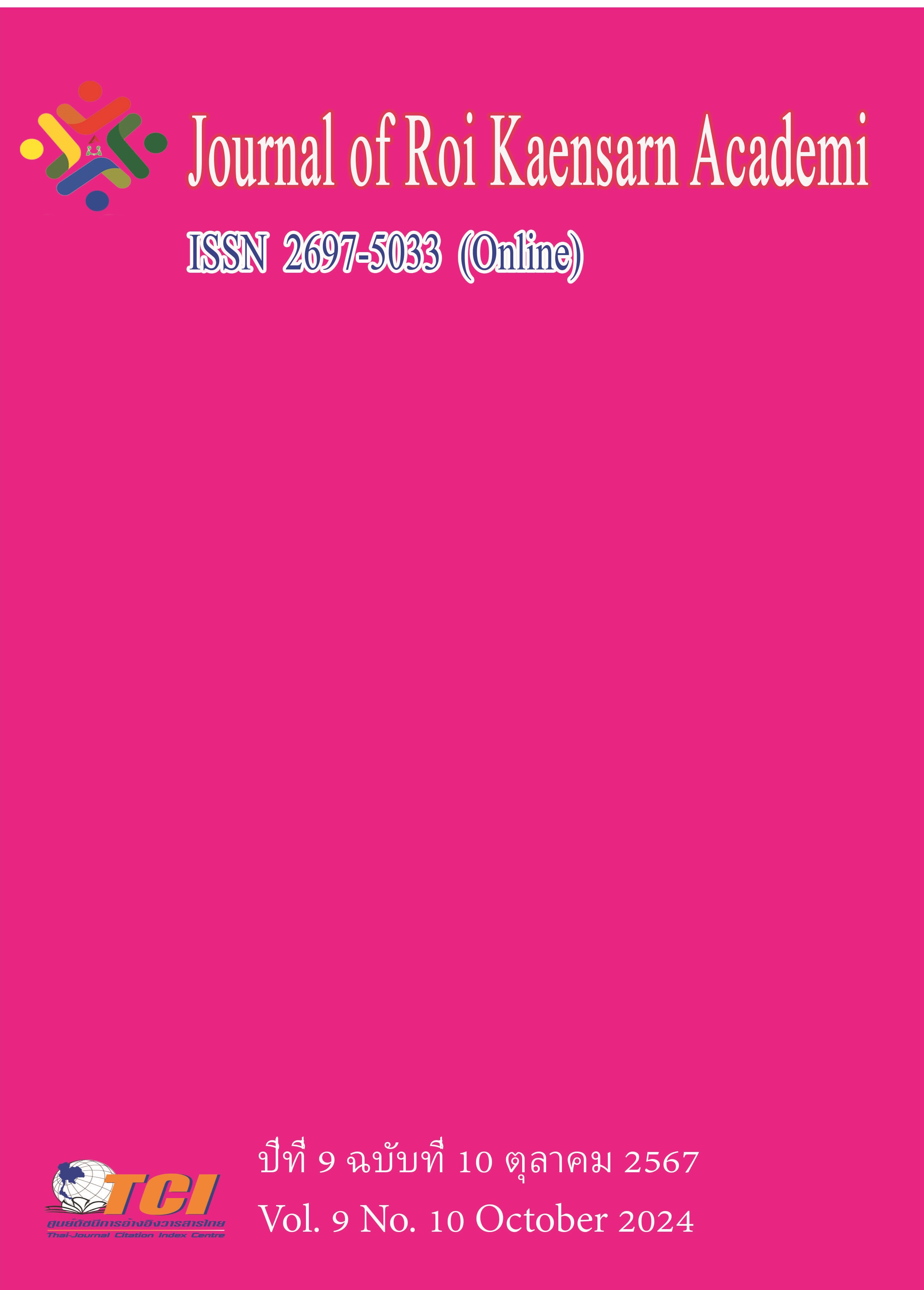The Research of Dance Therapy and Adolescent Mental Health: A Case Study on the Therapeutic Effects of the Street Dance for Dragon Dance
Main Article Content
บทคัดย่อ
This study investigated the effects of "Dragon Dance," a street dance form, as a therapeutic intervention for adolescent mental health. The objectives were to: 1) explore the impact of Dragon Dance therapy on adolescents' mental well-being; 2) assess changes in self-esteem, social skills, and emotional management; and 3) analyze the unique elements of Dragon Dance contributing to these improvements. A mixed-methods approach was employed, involving 50 adolescents aged 13-18 in a 12-week Dragon Dance therapy program. Data were collected through pre- and post-intervention questionnaires, in-depth interviews, and behavioral observations. Quantitative analysis of questionnaire data and qualitative analysis of interview and observational data were conducted. Results indicated significant improvements in participants' self-esteem, social skills, and emotional management. The physical expression and team collaboration inherent in Dragon Dance were found to facilitate stress release, confidence building, and enhanced social connections. This study provides empirical support for the application of street dance as an innovative therapeutic approach in adolescent mental health interventions. Future research should examine the long-term effects of various dance therapies and explore their integration into comprehensive mental health programs for adolescents.
Article Details
References
American Dance Therapy Association. (2020). What is dance/movement therapy?
Beaulac, J., Kristjansson, E., & Calhoun, M. (2011). 'Bigger than hip-hop': Impact of a community-based physical activity program on youth living in a disadvantaged neighborhood in Canada. Journal of Youth Studies, 14 (8), 961-974.
Chen, X. (2016). Promoting fundamental movement skills: A case study of youth hip-hop dance. Research Quarterly for Exercise and Sport, 87 (S2), A-28.
Cui, L., Wang, J., & Zhang, M. (2022). The impact of modern dance integrating traditional cultural elements on adolescent mental health: Theoretical discussion and prospects. Chinese Journal of Health Psychology, 30 (5), 678-683.
Groga, S., Hamma, U., & Doyle, L. (2020). Effects of dance movement therapy on self-esteem and body image in adolescents. Arts in Psychotherapy, 71, 101713.
Huang, Y., Wang, H., & Chen, C. (2019). Current status and challenges of mental health in Chinese children and adolescents. Chinese Mental Health Journal, 33 (8), 556-561.
Jeong, Y. J., Hong, S. C., Lee, M. S., Park, M. C., Kim, Y. K., & Suh, C. M. (2005). Dance movement therapy improves emotional responses and modulates neurohormones in adolescents with mild depression. International Journal of Neuroscience, 115 (12), 1711-1720.
Karkou, V., & Sanderson, P. (2006). Arts therapies: A research-based map of the field. Elsevier Churchill Livingstone.
Koch, S., Kunz, T., Lykou, S., & Cruz, R. (2014). Effects of dance movement therapy and dance on health-related psychological outcomes: A meta-analysis. The Arts in Psychotherapy, 41 (1), 46-64.
Levy, F. J. (1992). Dance movement therapy: A healing art. National Dance Association.
Li, J., Wang, Y., & Wang, X. (2019). A survey on mental health status of urban and rural adolescents in China. Chinese Journal of School Health, 40 (3), 357-360.
Li, M., Zhang, H., & Liu, F. (2021). Research progress and prospects on the impact of street dance on adolescent mental health. Sport Science, 41 (5), 91-99.
Liu, F. (2020). Research on the impact of street dance on psychological resilience of left-behind children. Chinese Journal of Special Education, 5, 89-95.
Wang, M., Guo, J., & Wang, Z. (2020). Factors associated with mental health problems among Chinese adolescents during the COVID-19 outbreak. Frontiers in Psychiatry, 11, 565036.
Zhang, M. (2018). A study on attitudes and help-seeking behaviors towards mental health services among urban adolescents in China. Youth Studies, 6, 55-64.
